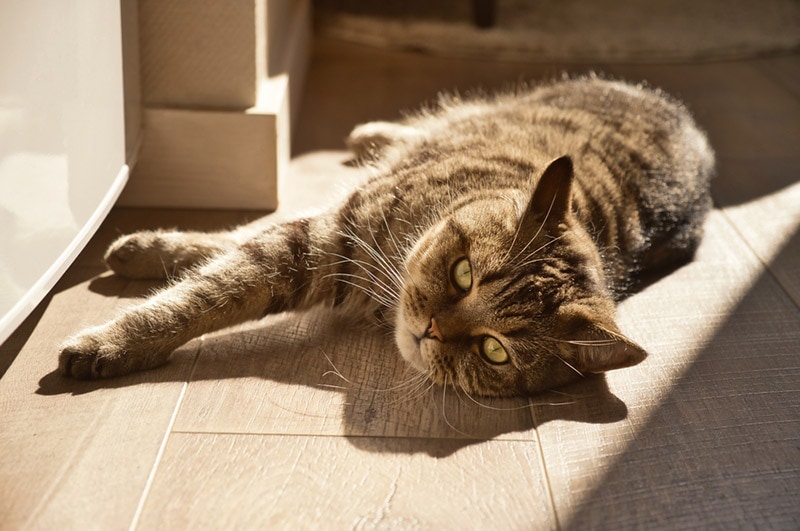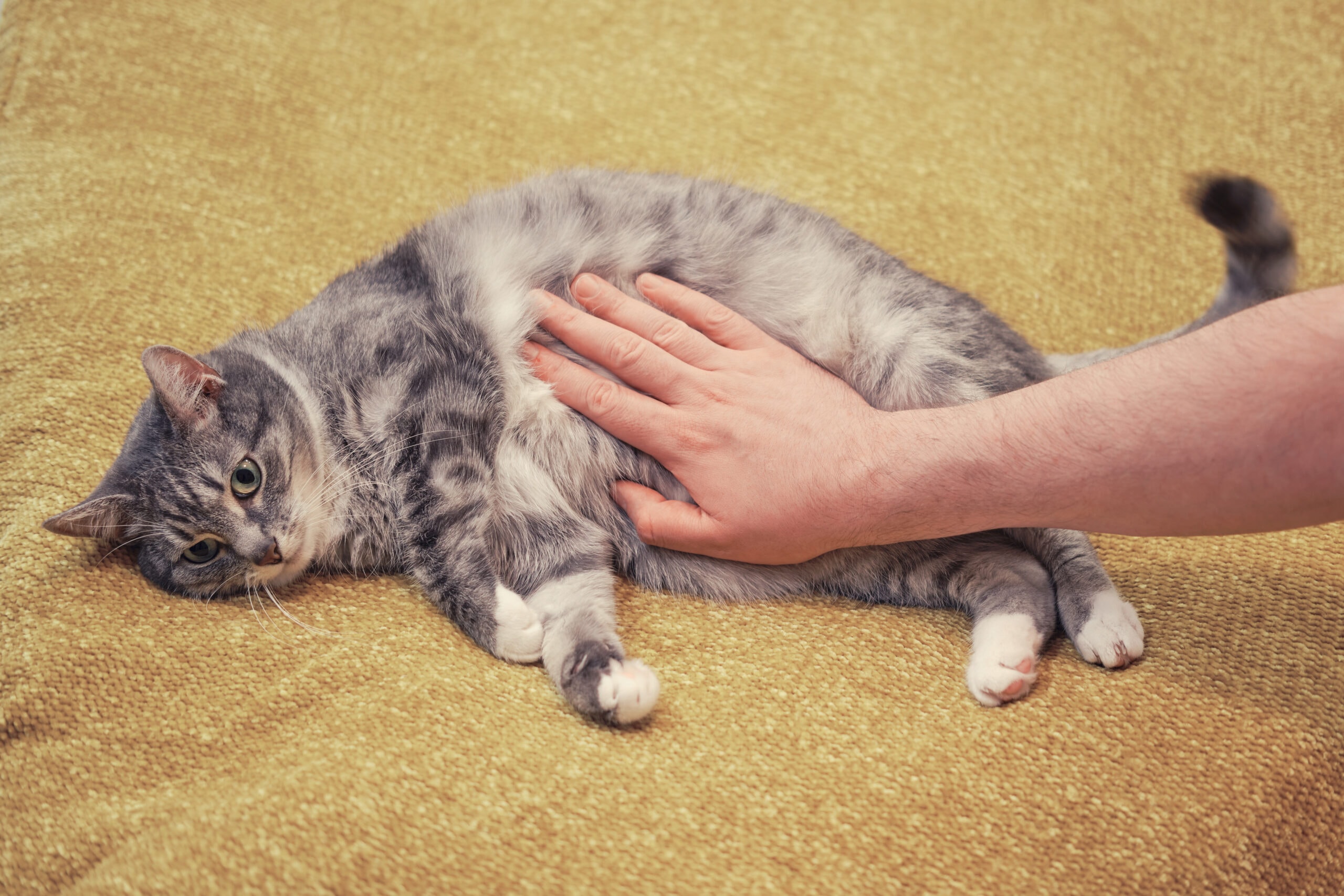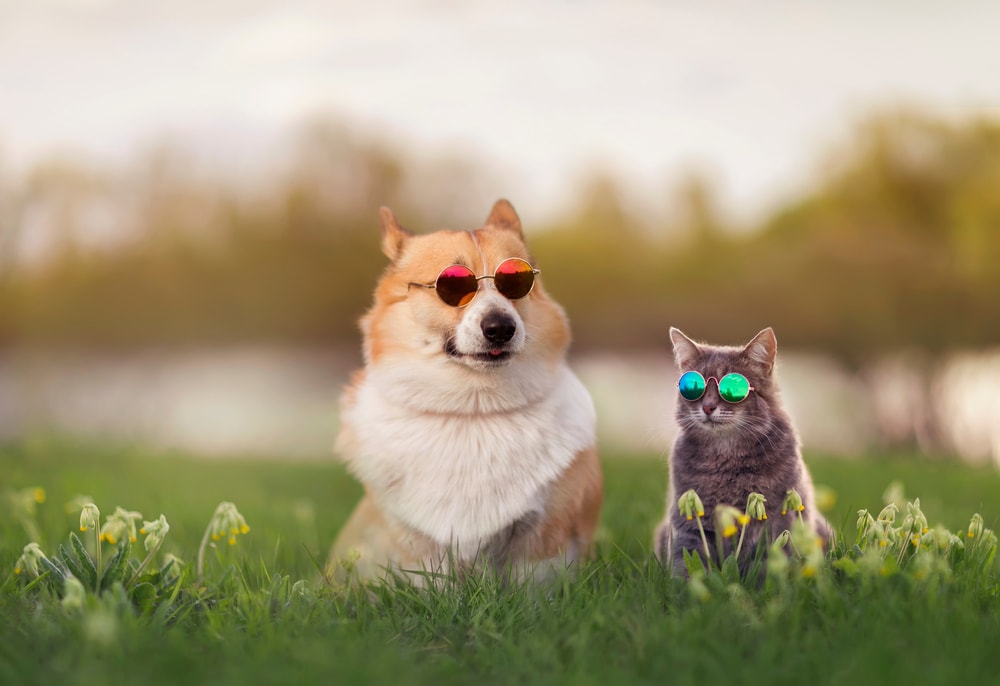Can Cats Get Sunburns? Vet-Reviewed Risks & Safety Explained

Updated on

When you think of getting a sunburn, do you think of laying out by the pool or beach too long or doing yard work on a hot day without applying any sunscreen and suffering the consequences? We all have had the experience of facing that painful redness that is hot to the touch, causing you to peel like crazy and taking days to resolve. You may not think of pet cats when it comes to those affected by harmful UV rays, but are they at risk? Let us look at how too much sun exposure can affect our cats.
Can Cats Get Sunburns?
As humans, we know the risks of being out in the sun, and we’re generally well-educated on how to protect our skin from the not-so-fun sunburns that come along with prolonged exposure. Like humans, cats are also susceptible to getting sunburns. Some cats are at a greater risk of sunburn than others and can suffer severely from the effects. Just like with us, repeated and prolonged exposure of sunburns can result in skin damage and even skin cancer. So, you should absolutely take steps to protect your cat from prolonged exposure to the sun’s damaging UV rays.

Which Cats Are at Higher Risk?
Sunburn is possible in all cats, but some will be at more risk than others of developing these conditions. Genetics and many other factors can play a role. Outdoor cats will be at higher risk of sun damage since they are regularly exposed to the sun, while indoor cats are at much lower risk but can still get sun damage from basking in windows.
Cats with white ears, pink noses, and white fur tend to be more susceptible to sun damage than others. Cats with vitiligo will naturally turn whiter as they age, and therefore, have an increased risk later in life. In addition, hairless cats, such as the Sphynx, or cats that have been shaved or have sparse hair, will also be incredibly susceptible.
How to Protect Your Cat From Sunburn
A sunburn on a cat can appear as hair loss or reddened skin, as it does in humans. The most common areas affected are the ears, nose, belly, and the skin around the eyes and mouth. Any area on your cat’s body where skin pigmentation is low and fur is thin will be more likely to burn. Here are the best tips and tricks for reducing the risk of sunburn in your cat.

Tips for Reducing Sunburn Risks
- It’s best not to let your cat roam outdoors unsupervised. In addition to increasing exposure to the sun, allowing your cat to roam outdoors comes with many additional risks. Depending on where you stay, it may also be against the law to let your cat roam outdoors.
- If your cat has outdoor access or if you take them for walks, try to do so at times when the sunlight isn’t intense (early morning or late afternoon/early evening).
- When utilizing a “catio” (cat patio) to allow your cat to have outdoor access, choose non-peak sunlight times. In addition, installing UV-protective films and having multiple shaded areas in your catio is recommended.
- Utilize blinds, black-out curtains, and/or UV-blocking films for your windows to reduce exposure for indoor cats.
- If a large portion of your cat’s body is shaved or has very sparse hair, or if you have a hairless cat, consider cat clothes to cover them up.
- Consider applying pet-safe sunscreen on areas of your cat’s body that have sparse hair and can’t be licked by your cat (such as the tips of their ears) if they frequently sit by windows or use a catio.
A Note About Sunscreens
There are sunscreens on the market that are made specifically for pets. If you opt to use cat sunscreen, it is recommended to use it only after a veterinary consultation and only on areas your cat cannot lick. Never use human sunscreen on your cat, and never apply sunscreen around their eyes.
For large, uncovered areas of skin, such as the belly, clothes are recommended over sunscreen. As pet sunscreen isn’t legally regulated in many countries, the best way to protect against the sun is to have your cat avoid it altogether. Unlike humans, cats don’t need sunlight to produce Vitamin D. Rest assured that your cat won’t be deprived of this vitamin if you shelter them from the sun.

Risks of Prolonged Sun Exposure
Too much exposure to the sun’s rays can lead to changes in skin cells and cause a progressive skin disease called solar dermatitis. Solar dermatitis is associated with an increased risk of malignant forms of some skin cancers in cats.
Solar Dermatitis
Solar dermatitis is a skin disease that results from prolonged exposure to the sun. The most affected areas on a cat are the ears, nose, and eyelids. There may be some hair loss and the skin may appear pink and slightly crusty in the earlier stages of solar dermatitis.
As solar dermatitis progresses, the area may develop lesions and ulcers. This can, in turn, lead to pain and irritation. They may begin scratching or over-grooming areas they can reach. If you think your cat is suffering from solar dermatitis, schedule a consultation with your veterinarian as soon as possible.
Skin Cancer
Squamous Cell Carcinoma
Squamous cell carcinoma is the type of skin cancer that is more commonly caused because of sun damage. Solar dermatitis that goes untreated may also eventually lead to this type of cancer. There are several treatment and management options your vet may choose for this cancer. These include topical creams, laser therapy, cryotherapy (freezing), chemotherapy, or radiation treatment.
As this cancer can easily spread to other parts of your cat’s body, ensure you routinely take your cat for their wellness checkups, and any time you feel there’s something wrong with their skin, as earlier diagnosis offers more treatment options and a better prognosis.
Angiosarcoma
Angiosarcomas are the most likely of all soft-tissue tumors to grow quickly and spread to other locations. They are often found on the legs and trunk, and some forms of this cancer have been associated with prolonged sun exposure, especially in cats with white coats. These tumors often spread quickly around your cat’s body. Reducing exposure to the sun may play a part in preventing their occurrence in your feline friend.

Conclusion
Just like humans, cats can get sunburned. Excessive exposure to the sun can be a risk factor for several skin ailments and cancers. For our feline friends, prevention is the best option when it comes to sun exposure. There are also additional measures you can take to minimize the risk of sunburn in your cats.
See also:
- Does My Cat Need Sunlight to Stay Healthy? The Interesting Answer!
- Do Cats Need Vitamin D? What Science Says
Featured Image Credit: AleksaKras, Pixabay











